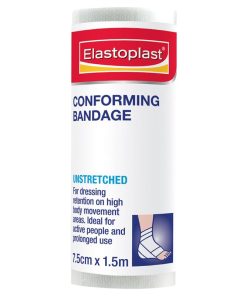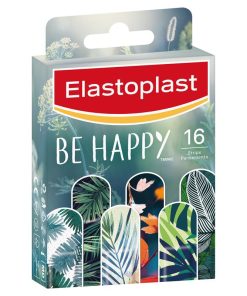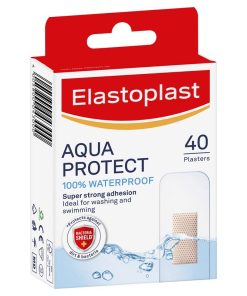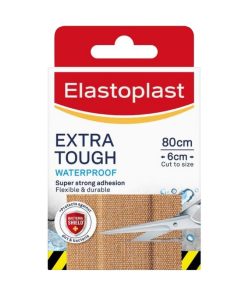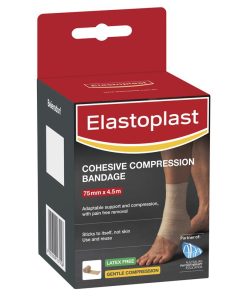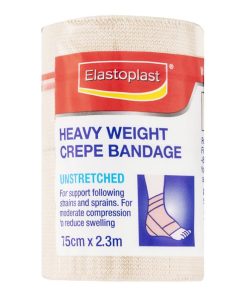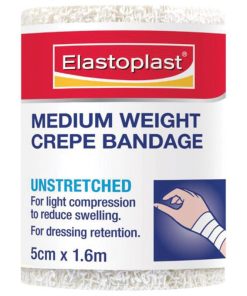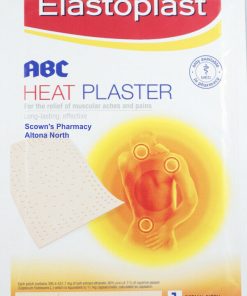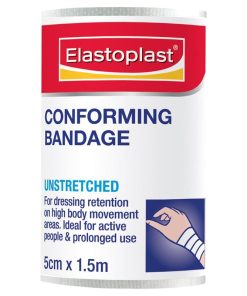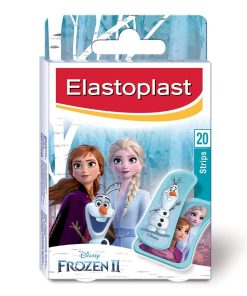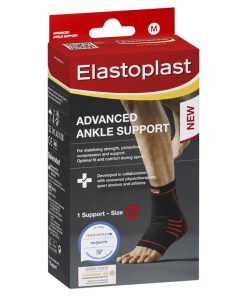Elastoplast Conforming Bandage Unstretched 7.5cm x 1.5m Elastoplast
$ 7,95 $ 4,77
Elastoplast Conforming Bandage Unstretched – dressing retention for high body movement areas.
Elastoplast Conforming Bandage Unstretched is for dressing retention on high body movement areas. Ideal for active people & prolonged use.
Elastoplast Conforming Bandage is durable and suitable for supporting and relieving injured joints. It is suitable for use as dressing retention on high body movement areas such as the wrist, thigh, and knee injuries.
FEATURES
- Multiple uses including wound dressing and sprain support
- Applies light compression to aid healing
- Multiple widths available for any part of the body
DETAILS
The Elastoplast Conforming Bandage provides support for injured joints in high movement areas like the wrist, thigh or knee. Commonly used as a dressing retention, the bandages conform to the shape of the applied area and provide relief and light compression.
Durable and lightweight with a high level of stretch, conforming bandages are ideal for various wound care applications including sprain support and dressing retention. Elastoplast Conforming Bandages are unstretched, 1.5m long and come in three different widths. This makes them suitable for injuries on almost any part of the body.
Available widths include:
- 5cm wide
- 7.5cm wide
- 10cm wide
DIRECTION
For Dressing Retention
Firmly wrap the injured area using a figure 8 shape, or overlap for limb areas such as forearm or calf. Ensure that the areas above and below the injury are covered.
Always ensure the binding is comfortable. Should any numbness or tingling sensation arise, unwrap the bandage & rebind less tightly.
PACKAGING SIZE
| Product | Size | Quantity |
| Conforming Bandage | 5cm x 1.5m Unstretched | 1 Bandage |
| Conforming Bandage | 7.5cm x 1.5m Unstretched | 1 Bandage |
| Conforming Bandage | 10cm x 1.5m Unstretched | 1 Bandage |
WARNING
Always read the label. Follow directions for use. If symptoms persist talk to your healthcare professional. This medicine may not be right for you. Read the warnings before purchase. The pharmacist reserves the right to not supply contrary to our professional and ethical obligation.
FREQUENTLY ASKED QUESTIONS
How to use support bandage?
For joint injuries, wrap the injured area using a firm figure of 8 shape, ensuring a good area above and below the injury is covered. For dressing wounds on limbs (such as the forearm or calf), firmly overlap the bandage around the limb, again covering adequate area above and below the injured area.
The bandage should not be so tight that you experience numbness or tingling. If this happens, unwrap and rebind less tightly.
Quick Shipping and Professional Packaging
We provide a variety of shipping options due to our long-running partnerships with UPS, FedEx and DHL. Our warehouse staff will package all goods to our exacting requirements. Your goods are thoroughly checked and secured properly prior to shipping. We ship to thousands clients each day across multiple countries. This shows that we're committed to being the largest online retailer in the world. Both Europe and the USA have distribution and warehouse centres.
Note: Orders that include more than one item will be assigned a processing date depending on the item.
Prior to shipment, we will inspect thoroughly the items you've purchased. The majority of orders are shipped within 48 hours. The expected delivery time will be between 3-7 days.
Returns
We don't control the inventory in our factory and warehouse. This means that the actual stock could change at any time. Be aware that your order may be out of stock when the order has been placed.
Our policy is valid for 30 days. If you have passed 30 days in the past since you purchased and we are unable to offer you a refund or exchange.
The item cannot be used and in its original condition. It must also still be in the original package.
Related products
Braces & Sleeves
Blister Plaster
Bandages, Gauze & Dressings
Elastoplast Sports Underwrap Sport ElastoWrap 10mx5cm Knee Taping Shoulder Elastoplast
Bandages, Gauze & Dressings
Elastoplast Crepe Bandage Heavy Weight 5cm x 2.3m Elastoplast
Bandages, Gauze & Dressings
Bandages, Gauze & Dressings
Elastoplast – Aqua Protect Waterproof Adhesive Dressing 5cm x 7.2cm Elastoplast
Bandages, Gauze & Dressings
Bandages, Gauze & Dressings
Braces & Sleeves
Bandages, Gauze & Dressings
Elastoplast Sport Elastowrap – 10m X 10cm Skin Taping Bandages Hypoallergenic Elastoplast
Bandages, Gauze & Dressings
Bandages, Gauze & Dressings
Bandages, Gauze & Dressings
Elastoplast Cohesive Compression Bandage 75mm x 4.5m Elastoplast
Bandages, Gauze & Dressings
Elastoplast Bandage Crepe Unstretched 7.5cm x 2.3m Elastoplast
Bandages, Gauze & Dressings
Elastoplast Cohesive Compression Bandage 50mm x 4.5m Elastoplast
Bandages, Gauze & Dressings
Elastoplast Crepe Bandage Medium Weight 5cm x 1.6m Elastoplast
Bandages, Gauze & Dressings
Bandages, Gauze & Dressings
Elastoplast Antibacterial Sensitive Dressing XXL 8cm x 10cm Antiseptic Sterile 5 Pack Elastoplast
Supports & Braces
Bandages, Gauze & Dressings
Elastoplast Sports Underwrap Sport ElastoWrap 10mx10cm Knee Taping Shoulder Elastoplast
Pain & Fever Relief
Elastoplast ABC Heat Plaster Relief of Muscular Aches & Pain Dermal Patch 22×14 Elastoplast
Bandages, Gauze & Dressings
Elastoplast Conforming Bandage Unstretched 5cm x 1.5m Elastoplast
Bandages, Gauze & Dressings
Cushioning Tape
Braces & Sleeves
Bandages, Gauze & Dressings
Elastoplast Fabric Plaster – 2. 5cm x 3m Roll Elastic Tape Support Strip Elastoplast



